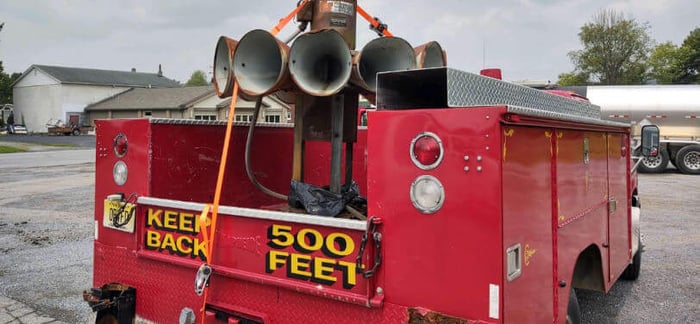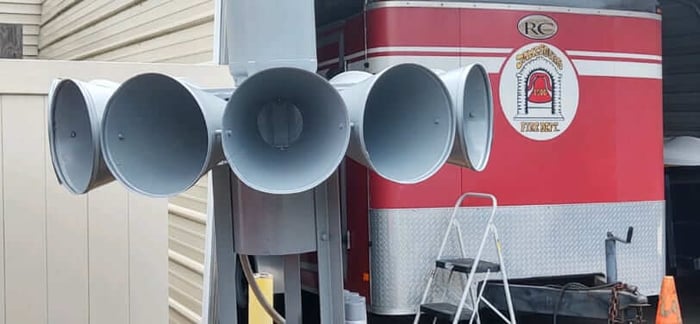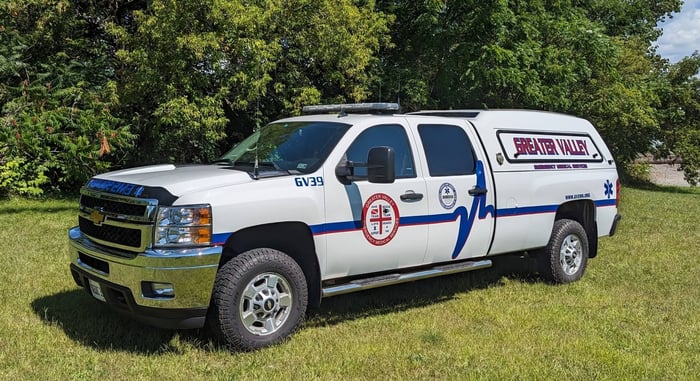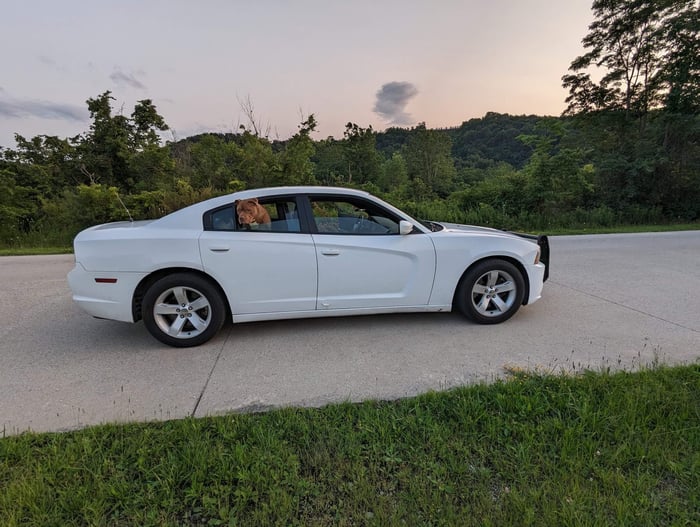In a digital age where emergency alerts ping through smartphones, we easily forget the role that wailing sirens once played in summoning volunteer firefighters. Yet, for Richard Twomey, a structural fire protection engineer, these vintage sirens are more than just relics of the past - they are pieces of living history worth preserving.
Richard lives out a mission of locating, restoring, and reinstalling retired signal fire sirens. He does this specifically for those communities that rely solely on volunteers. Already, he has brought over a dozen sirens back to life after municipalities discarded them. With his growing expertise and determination, there is plenty more to be done for small-town America.
Rescuing Relics of the Past
For forty years, Richard has served as both a member of a metropolitan fire department and as a volunteer. Today, his projects are different in nature, but reflect the same firefighting theme. With a total of 15 wins, one of his most recent bidding stories involved a 1983 federal signal siren from central Pennsylvania. He won this item through Municibid, a win that came in handy when a New Jersey friend working for another fire department needed help with a whistle that went bad.
“We drove out to western Pennsylvania, picked up the siren from this municipality, and drove it all the way back to New Jersey for a four-hour trip and offloaded it, and began the restoration work, which consisted of sanding and priming and painting it three coats and getting it ready to go, put it back in service. We completed the work at the end of last summer and put it back up with the assistance of another fire department that had a tower ladder truck.”
“I’ve had luck with other municipalities, getting rid of these whistles for one reason or another, and I’ve restored two or three others for some additional towns in the area and put those up in place of ones that have burned out, that are no longer usable.” - Richard Twomey
Richard is not the only one with an interest in restoring sirens either. If you ask him, he’ll tell you there’s actually a cult following.
“There’s kind of a cult following of these things on YouTube and on eBay, et cetera. People that out there look for these things that have worked on them in the past or have restored them in the past. And there’s a lot of good videos on YouTube regarding restorations people did and how they went about it and what they employed these whistles for. A lot of them just keep them as a yard ornament.” - Richard Twomey

Preserving Community Fabric
For communities with rich firefighting heritage, preserving working sirens represents more than just maintaining emergency backups. These sirens are living artifacts that evoke memories for the entire community. That’s why Richard spent months refurbishing the siren he won before donating it to the Jamesburg Fire Department. Now, the small town once again has an audible way to summon its volunteer firefighters. Richard also appreciated learning that the volunteer fire department consisted of people that worked in restaurants and similar places, illustrating the closeness of the small borough.
“In the case of the Jamesburg borough, the fire siren has always been a fabric of the town. The town had people that worked there and were on the volunteer fire department that worked in the hardware stores and the restaurants and so forth in the town. And when there was a fire call, you knew it because the alarm was going. And as the mayor told me after we put it back up, it’s been part of the town’s fabric since the 1930s, and she said it’s good that we have this back up again.” - Richard Twomey
Aside from the emotional benefits, sirens serve as backups whenever modern tech misses the mark. They’re especially important in places with poor cellular coverage or areas with a potential for system-wide outages.

Reviving Obsolete Machinery
Getting these sirens working again is truly a labor of love, one motivated by Richard’s passion for firefighting history rather than profit, which is why he gifts them to fire companies.
Beyond the preservation aspect, he finds joy in the technical challenge of bringing derelict sirens back up to operating condition, especially given the obsolete nature of their mechanisms.
"These are no longer manufactured. This model is no longer manufactured. There's newer models out there, but they really, I think, underperform for what we used back years ago.” - Richard Twomey

More Than Just a Job
Richard has noticed an unfortunate decline in the number of volunteer firefighters. Time-consuming training requirements and long working hours make commitment difficult for many. Despite the trend, he remains optimistic about the future, encouraging anyone, especially prior military members, to consider this fulfilling vocation.
His decades-long firefighting career created a level of camaraderie and sense of purpose that has stayed with him. His auctioning and restoration side gig allows him to give back to the greater fire community while at the same time, indulging his engineering passion.
"Engineering work can be pretty demanding. I spend a lot of time working extra hours doing it. So when I’m not doing it, I want to do something with my time that’s got some good for the general public. And some of the work I’ve done with public auctions has been kind of a stress relief and time better spent, as far as I’m concerned, until I retire." - Richard Twomey
Conclusion
Today, few municipalities rely on sirens as their primary emergency notification system. There’s plenty of other, more effective modern technology. However, backups still serve a purpose- That means there’s always some fire department somewhere for Richard to serve. He’s been a member of Municibid for two years, with plans to continue his good work. Like Richard, those who decide to volunteer could find ways to use government surplus in the service to their communities too.
"I just decided with the effort and the friendships I've had through the years with this fire department, that I would just donate it to them, which is what I did.”
“Sometimes just the cost of rebuilding the motors is prohibitive, and you just don’t want to spend that kind of money when there’s other things that you’re dealing within a fire department to come in compliance with state regulations and with trying to keep your apparatus up to snuff and keeping everything moving so that you’re able to respond.” - Richard Twomey







